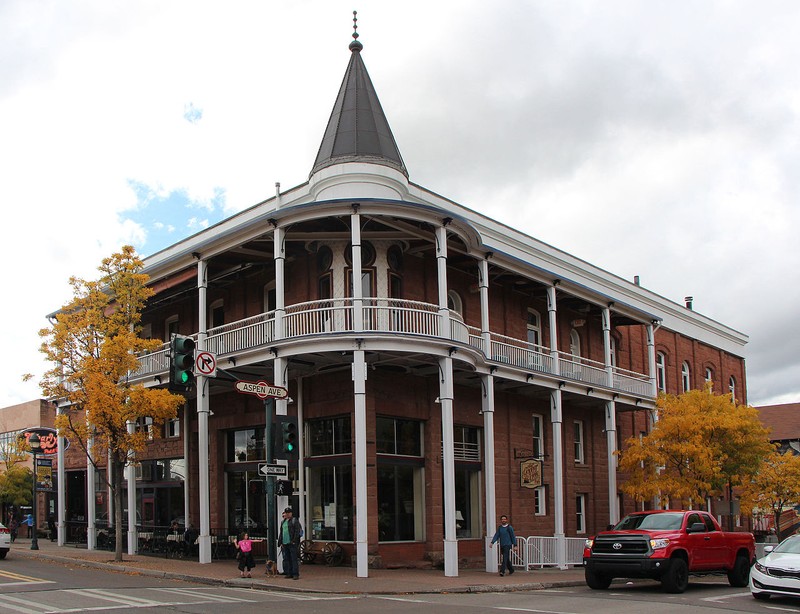Weatherford Hotel
Introduction
Text-to-speech Audio
Images
The Weatherford Hotel opened in 1900 and has remained an important landmark in Flagstaff

Backstory and Context
Text-to-speech Audio
John W. Weatherford was born in Fort Worth, Texas, in 1859 and spent his childhood in Weatherford, Texas. As a young man, he raised cattle in New Mexico and then worked as supply agent for mining camps in Tombstone, Arizona and in Mexico. He finally made his way to Flagstaff in 1886. He tried a few occupations including becoming a saloon keeper and running a livery stable. Eventually he found success selling men's clothing. He also served as justice of the peace from 1897 to 1898.
In 1897, after fires destroyed much of the town, the city required new buildings to be constructed with brick. Weatherford erected a two-story brick structure in 1898; a general store occupied the first floor he and his family lived on the second floor. The next year, he decided to expand the building and convert it into the hotel. His recognized that, with the Grand Canyon being only 80 miles away (it became a national park in 1919) and reached by train, tourism would increase in Flagstaff. The Weatherford remained the city's premier hotel for many years. It would later become home to a theater, billiard hall, restaurant, dormitory during World War II, and a radio station. It was used for other purposes as well.
Weatherford impacted Flagstaff in other ways as well. He built the Telephone Exchange building (which is directly next to the hotel) and the Opera House which is now the Orpheum Theater. He also spearheaded the effort to build a road the San Francisco Peaks and played a large role in establishing what would is now Northern Arizona University. He died in Phoenix in 1934. The hotel building gradually fell into disrepair and was under threat of demolition in 1974. Fortunately, the current owners bought it at that time and have continuously restored and maintained it ever since.
Sources
"About the Weatherford Hotel." Weatherford Hotel. Accessed September 19, 2020. http://weatherfordhotel.com/about-us.
Edenhofer, Carl. "Weatherford Hotel." National Park Service - National Register of Historic Places Nomination Form. March 30, 1978. https://npgallery.nps.gov/GetAsset/32e84b58-103a-46ce-9b75-57617dee595a.
"Weatherford Hotel." The Historical Marker Database. Accessed September 19, 2020. https://www.hmdb.org/m.asp?m=59507.
Steven Price, via Wikimedia Commons: https://commons.wikimedia.org/wiki/File:Flagstaff-Weatherford-Hotel.jpg
